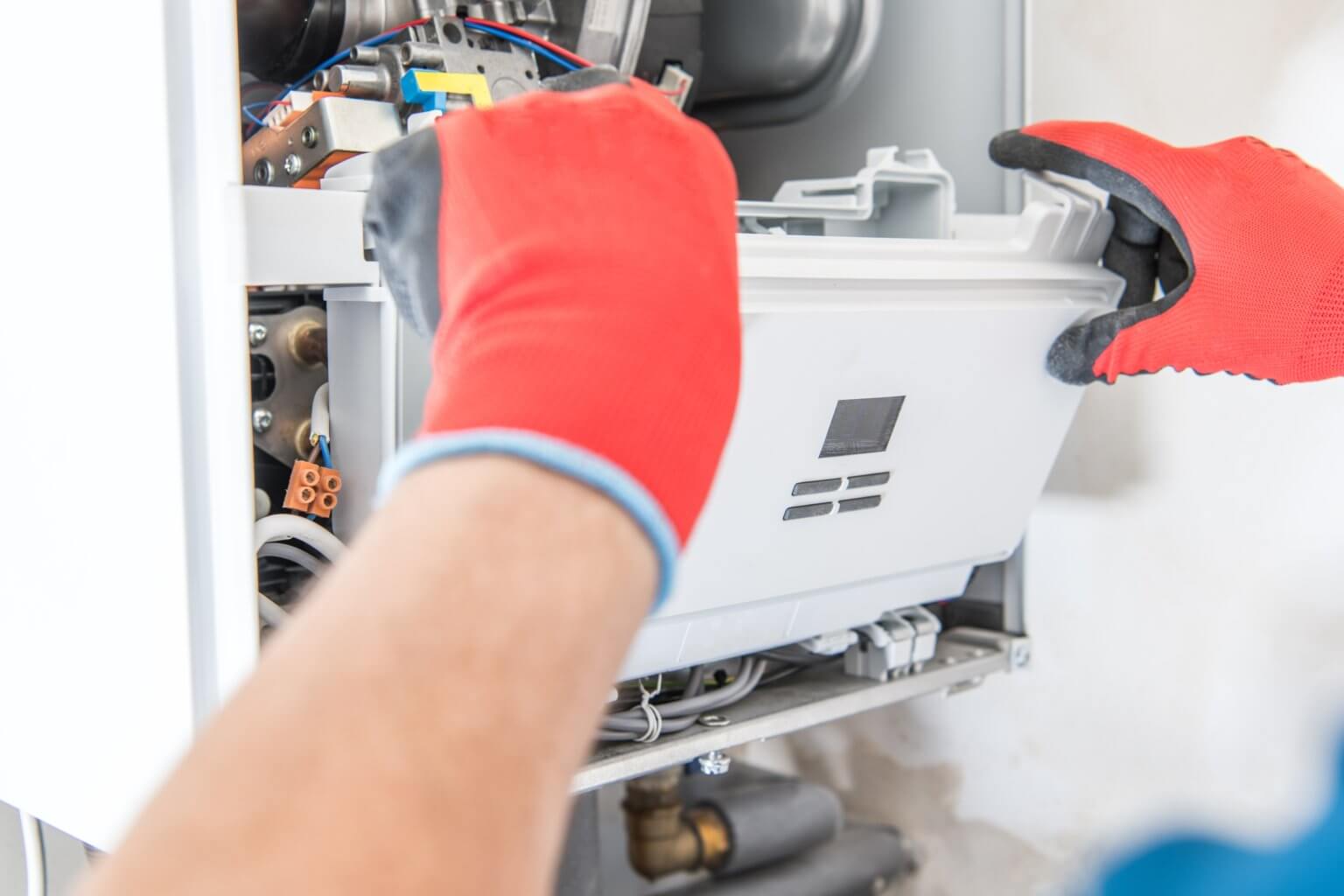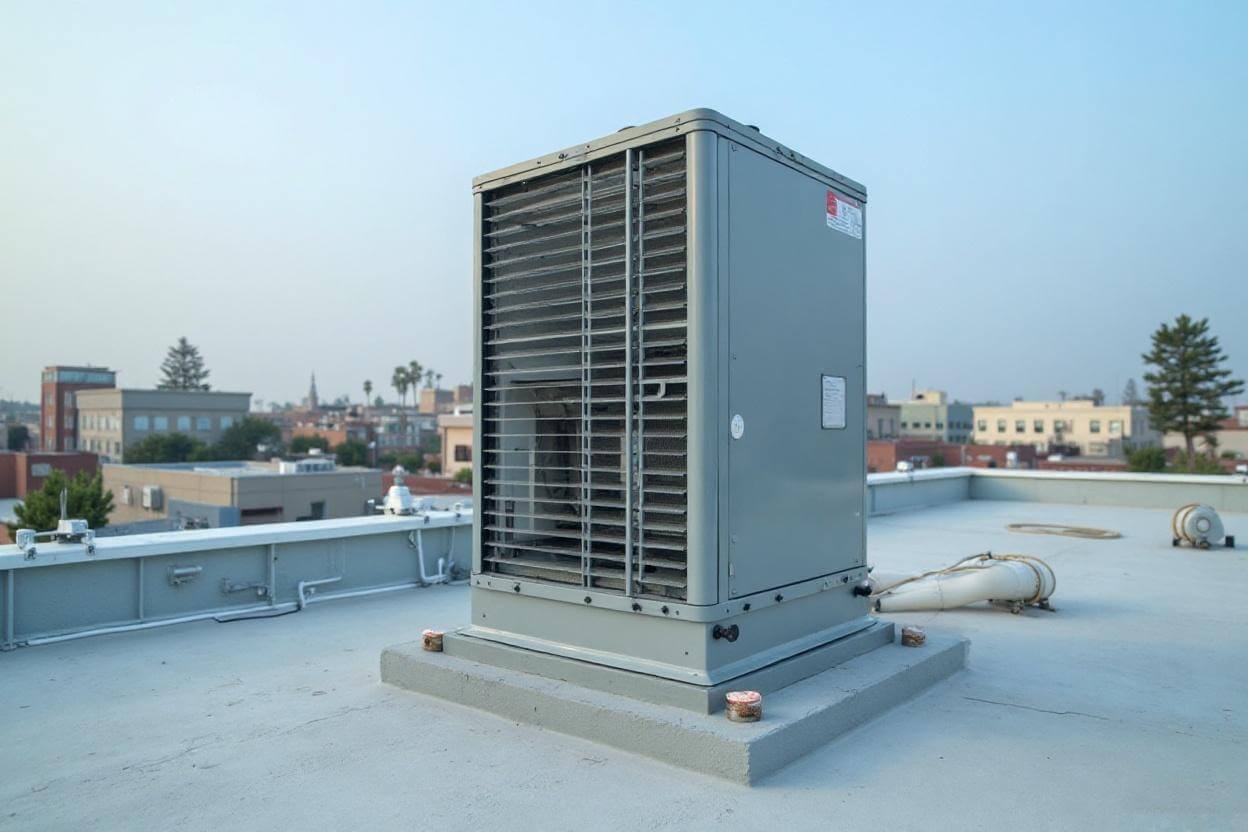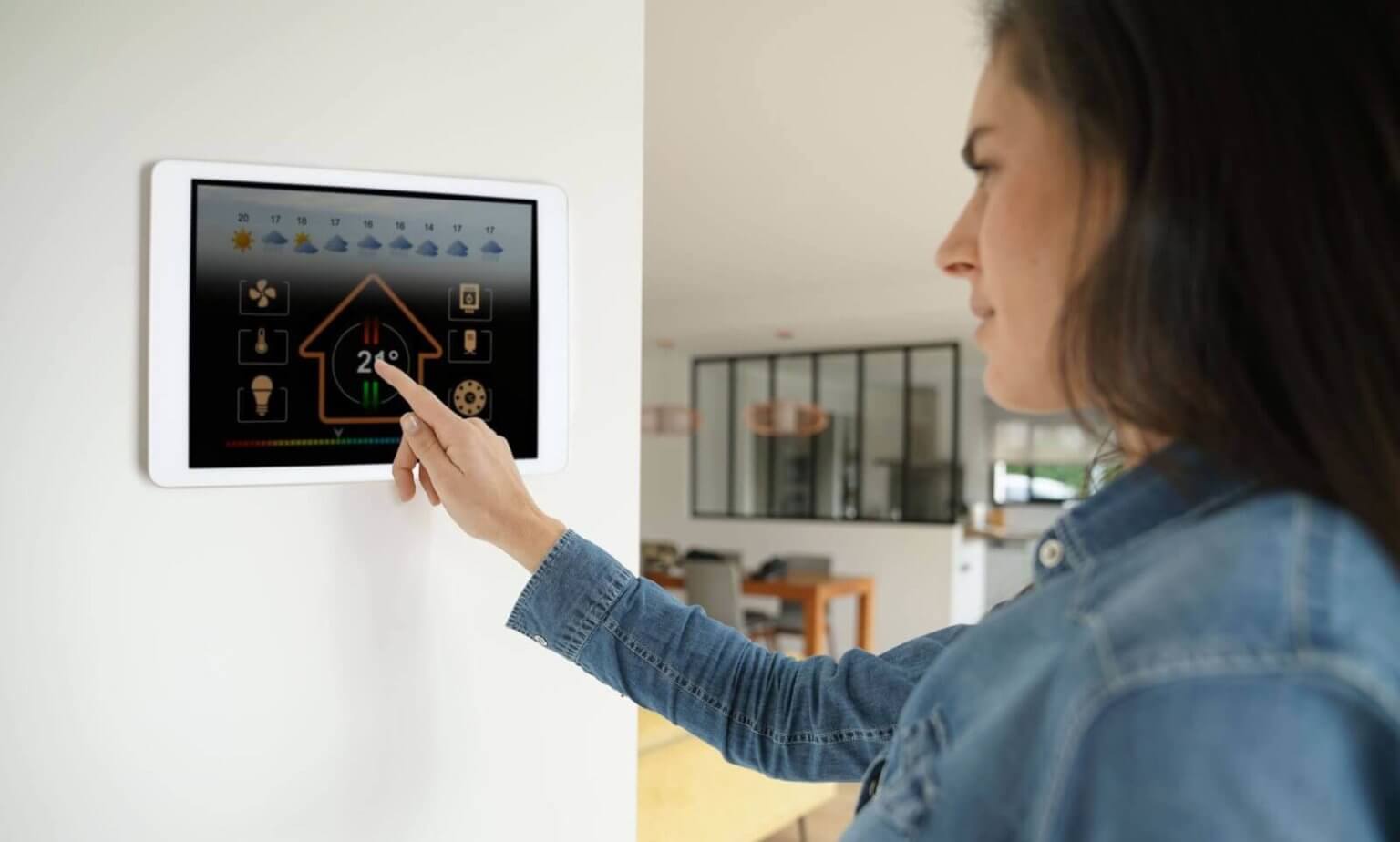How Much Does It Cost To Upgrade Your HVAC System?
Upgrading an HVAC system in Canoga Park is not a one-price decision. The final number depends on home size, ductwork condition, energy goals, and brand preferences. Homeowners often start with a simple question about cost and soon realize the larger picture: comfort, efficiency, indoor air quality, and long-term operating expenses. This guide lays out real price ranges, what drives those numbers up or down, and how to plan a smart upgrade that fits a Canoga Park home and climate.
Season Control Heating & Air Conditioning serves Canoga Park, West Hills, Winnetka, and nearby San Fernando Valley neighborhoods. The team sees both ends of the spectrum: small bungalows that need a right-sized heat pump, and larger homes that benefit from zoning, high-efficiency furnaces, and upgraded ducts. The numbers below reflect local experience with permits, labor, and common product options.

The short answer: realistic price ranges in Canoga Park
A standard central air conditioner replacement starts around $6,500 and can reach $11,000 for higher-efficiency units with upgraded features. A complete HVAC upgrade — condenser, coil, furnace or air handler, thermostat, and basic duct adjustments — often falls between $10,000 and $18,000. Heat pump systems, which provide both cooling and heating, generally range from $11,000 to $20,000 installed, depending on capacity, efficiency rating, and whether new ducts or electrical work are needed.
High-efficiency gas furnaces (96% AFUE and above) typically add $3,500 to $6,500 when installed with a compatible AC or heat pump. Ductwork replacement or major redesign is the biggest swing factor; a full duct replacement with quality sealing and insulation in a typical Canoga Park home can add $4,000 to $9,000, depending on access, attic condition, and home size. Zoning systems, indoor air quality upgrades, and smart thermostats add more, but they also improve comfort and control.
These are local ballparks, not quotes. A technician needs to assess the attic, equipment location, refrigerant lines, electrical capacity, and airflow. That said, the figures are reliable for early planning.
What drives HVAC upgrade cost in Canoga Park homes
Square footage sets the baseline, but it is not the only driver. Orientation, insulation levels, window quality, and duct condition all matter, especially under valley heat. Two similar-sized homes on different streets can require different system sizes because of sun exposure and attic ventilation.
Older Canoga Park homes often have leaky ducts, undersized returns, or long, kinked flex runs. This forces equipment to work harder and shortens service life. Fixing the duct system — sealing, resizing, and adjusting returns — prevents wasting money on an oversized unit. Good airflow is the cheapest efficiency boost available.
Electrical capacity also affects cost. Heat pumps and variable-speed systems may need dedicated circuits or panel upgrades. If the panel is older or full, factor in an electrician. While that adds cost, it sets up the home for reliable performance and, for heat pumps, efficient heating during cooler valley nights.
Finally, brand and feature selection matter. Variable-speed compressors and ECM blower motors cost more upfront but save on energy, reduce noise, and improve humidity control. Many Canoga Park homeowners value a quieter system, especially in smaller lots where the outdoor unit sits near living space or a neighbor’s fence.
AC, heat pump, or furnace: choosing the right path
Most Canoga Park homeowners have a split AC and gas furnace. That setup still works well, especially with high-efficiency furnaces and a modern variable-speed AC. Heat pumps have gained popularity because they cool and heat using electricity and perform efficiently in mild winter lows typical of the San Fernando Valley.
A dual-fuel setup pairs a heat pump with a gas furnace, switching to gas heat only on the coldest nights. This option carries a higher install cost but keeps operating costs low across a wider range of temperatures and gives more heating power during rare cold snaps.
If an older evaporative cooler still sits on the roof, it is worth removing it during the upgrade. Patching and sealing that roof penetration cuts heat gain and dust.
Efficiency ratings that actually matter
SEER2 and HVAC system upgrade EER2 replace older ratings and better reflect real-world performance under stricter test conditions. For AC and heat pumps in Canoga Park, SEER2 between 15 and 18 delivers a strong balance of cost and energy savings. EER2 matters during peak heat; higher EER2 units hold capacity and efficiency when the mercury spikes.
For furnaces, AFUE shows how much of the fuel becomes usable heat. A 96% AFUE furnace wastes very little gas. On paper, a 99% unit sounds great, but the extra purchase cost rarely pays off under local gas rates unless the home runs the heater for long periods each winter. The team often recommends a 96% unit with a variable-speed blower because the airflow control improves comfort in every season.
Realistic examples seen in Canoga Park
A 1,300-square-foot ranch with aging ducts and a 20-year-old AC: The homeowner wants lower bills and quieter operation. A 3-ton, 16 SEER2 AC with a variable-speed furnace, new refrigerant lines, and partial duct repair typically lands around $12,000 to $14,500. Full duct replacement and attic sealing might push it to $17,000, but the home’s comfort and dust control change overnight.
A 1,900-square-foot two-story with hot second-floor bedrooms: The homeowner chooses a zoned system. A 4-ton heat pump with two zones, new dampers, and a modern thermostat package ranges from $17,000 to $22,000. Separate return upgrades on the second floor solve hot spots better than constant overcooling. Energy use drops, and the upstairs finally sleeps cool in July.
A 1,600-square-foot home planning to move in two years: The homeowner selects a mid-tier 15.2 SEER2 AC with a single-stage furnace to control cost and pass inspection. The job totals $9,000 to $11,000, meets code, and shows well for resale.

How ductwork changes the budget
Ductwork is often the quiet line item that explains why two quotes differ by several thousand dollars. Good ducts set up a system to perform at its listed efficiency. Bad ducts erase those ratings. Leaks of 20 to 30% are common in older attics. In summer, that leak dumps cooled air into a 130-degree attic and draws dusty, hot air into the home.
Full replacement makes sense when the ducts are undersized, brittle, or laid out poorly. In other cases, sealing and resizing returns deliver most of the gain for less. Expect $1,200 to $2,500 for targeted sealing and return work, and $4,000 to $9,000 for a full replacement with proper mastic sealing, hangers, balancing, and insulation.
Season Control’s crews often fix chronic hot rooms by adding a dedicated return, straightening long flex runs, and setting proper airflow at each register. Those steps can reduce run time and noise even before the new equipment goes in.
Permits, rebates, and the city reality
Los Angeles and the City of Los Angeles Department of Building and Safety require permits for HVAC replacements and duct changes. Permits add cost and time, but they protect resale value and confirm safety. Budget $250 to $600 for permits in most single-family cases.
Utility rebates change every year. Heat pump rebates are strong right now across California, and some programs favor high-efficiency ducted systems or variable-speed compressors. There may be incentives for smart thermostats and duct sealing as well. A site visit is the best time to match a home with active programs.
What a full HVAC upgrade includes
A thorough upgrade addresses more than the outdoor unit. For most Canoga Park homes, a solid scope includes the outdoor condenser or heat pump, indoor coil or air handler, furnace if present, new refrigerant lines when possible, a condensate overflow safety switch, code upgrades for gas and venting, and a modern thermostat. If existing lines remain, they need pressure testing and flushing to protect the new compressor.
Good installs also add a service disconnect at the outdoor unit, a proper pad or seismic bracket, and line set insulation rated for heat. In attics, technicians should use a secondary drain pan and float switch. These details avoid water damage and service headaches.
What homeowners control in the budget
Homeowners shape costs with choices about efficiency, features, and timing. A mid-tier system often returns the best value in Canoga Park, especially when the ducts are set up well. Higher SEER2 makes sense for long daily run times or for clients who prioritize quiet and humidity control. Zoning is worth the cost in two-story homes or layouts with wings and additions.
Some clients plan upgrades in spring or fall to avoid weather pressure and schedule flex limits. That does not always change price, but it can open more product options and smoother installs. Regular maintenance after the upgrade preserves warranty, keeps efficiency steady, and extends life. Many failures come back to airflow issues and dirty coils, both preventable.
Heat pumps in the San Fernando Valley climate
Heat pumps fit this climate well. Summer cooling stays efficient, and winter evenings rarely drop outside the comfort range for modern systems. The latest variable-speed heat pumps deliver steady, quiet heat and avoid the blast of hot air typical of older furnaces. For homeowners with solar or a goal to reduce gas use, this path makes sense.
The edge case is a home with poor insulation and drafty windows. A heat pump can still handle it, but it might need a larger capacity or a dual-fuel setup for peak comfort. An onsite load calculation sets the answer. Guessing by square footage alone risks oversizing, which creates short cycling and uneven temperatures.
Smart thermostats, filtration, and indoor air quality
A smart thermostat saves little if the system was sized wrong or the ducts leak. With a correct install, it adds convenience and gentle savings. The best value often comes from a variable-speed blower paired with a smarter thermostat. It runs longer on low, keeps air mixed, and holds temperatures steady without as many swings.
Filtration upgrades pay off for homes near busy streets or with pets. A media cabinet with a high-MERV filter improves air quality without throttling airflow. UV lights help with coil cleanliness, though they are not a cure for poor ducts. For allergy concerns, consider a sealed return path and a quality filter before jumping to pricier air cleaners.
What a strong quote looks like
A strong proposal shows equipment model numbers, efficiency ratings, and warranty terms. It lists the scope of work in plain terms: line set replacement or reuse, duct changes, electrical work, permit handling, thermostat model, and disposal of old equipment. It should also show any adders for attic access, asbestos testing if relevant, and crane fees if the unit sits on a roof.
Season Control’s quotes include a load calculation, static pressure readings, and duct notes, so the homeowner sees why a certain tonnage and blower size were chosen. This transparency avoids upsizing out of habit.
Typical timelines and what to expect on install day
Most residential HVAC upgrades take one to two days. Duct replacement or multi-zone setups add another day. Crews protect flooring, cut precise openings for returns if needed, and test for refrigerant leaks before charging. The final step is system startup, thermostat programming, and homeowner walk-through. Expect a short rundown on filter changes, condensate drain checks, and maintenance intervals.
Clients in Canoga Park often comment on noise reduction after a proper upgrade. That comes from quieter outdoor units, variable-speed indoor blowers, and better duct layout. Nighttime cycles no longer wake the house, and conversations no longer compete with the AC.
Cost breakdown by component
While every home differs, the following breakdown reflects common Canoga Park ranges for quality HVAC upgrade services:
- Equipment package: $6,500 to $13,000 for AC plus furnace, or $8,500 to $16,000 for a heat pump system, including outdoor unit, indoor coil/air handler, and standard thermostat.
- Ductwork: $1,200 to $2,500 for sealing and return adjustments, or $4,000 to $9,000 for full replacement.
- Electrical and code upgrades: $300 to $2,000, higher if a panel upgrade is needed.
- Permits and inspections: $250 to $600.
- Add-ons: $400 to $1,200 for a smart thermostat, $300 to $900 for a media filter cabinet, $1,800 to $4,000 for zoning hardware in a two-zone setup.
These ranges assume typical access and no structural surprises. Attic space that is cramped, low, or packed with stored items can slow the job and add labor. Homes with asbestos-containing duct wrap from older eras require testing and proper abatement, which is a separate cost and schedule.
Financing and operating cost math that make sense
Many clients spread the investment with financing. The key is to weigh payment against energy savings and comfort gains. A 16 SEER2 system replacing a 12 SEER unit can cut cooling costs by roughly 20 to 30% depending on usage and duct condition. Over high-run months in Canoga Park, that difference adds up.
Gas savings from a 96% furnace appear during cooler months, but the bigger comfort change usually comes from a variable-speed blower and sealed ducts. That steadier airflow supports even temperatures room to room, so the system runs less to catch up.

Red flags to avoid
Watch for quotes that jump a full ton in capacity without a load calculation. Bigger is not better in this climate; it short cycles and misses humidity control. Be wary of ignoring ducts. Shiny new equipment on leaky ducts is a waste. Confirm refrigerant line plans; reusing old lines without testing and cleaning risks compressor damage. Finally, ask who handles the permit and inspection. Unpermitted installs create problems at resale and during insurance claims.
Seasonal factors unique to the Valley
Heat loads in Canoga Park spike in late afternoon when sun hits west-facing walls and attic temperatures peak. Systems with strong EER2 ratings handle that hour better. Homes with vaulted ceilings and skylights need careful sizing and return placement. For older roofs with dark shingles, attic insulation and ventilation upgrades reduce both system size and runtime. Sometimes a modest insulation upgrade shaves enough heat gain to allow a smaller, less expensive system that also runs quieter.
Why homeowners choose Season Control
Local crews who work the same neighborhoods every week spot patterns faster: that one block with tiny attic access, the post-war tract with undersized returns, the corner lots with constant sun on the living room wall. The company’s approach keeps the goal simple — strong airflow, correct sizing, clean install, and a quiet, efficient system that lasts.
Most calls start with a clear need: the AC limps through another August weekend, the heater smells odd on startup, or the noise level becomes old news. The team shows up ready to measure, not guess. That habit leads to quotes that reflect the real job — no lowball numbers that balloon on install day.
Getting a clear estimate in Canoga Park
A thorough visit takes 60 to 90 minutes for a typical home. Expect questions about hot or cold rooms, allergies, and noise tolerance. The technician will measure supply and return sizes, read static pressure, and check attic conditions. With that data, the estimate shows a few paths: a strong mid-tier option, a higher-efficiency package with quieter operation, and an economical plan if the home will be sold soon.
If rebates apply, the office spells them out and handles paperwork. If ductwork needs attention, the quote shows the difference between sealing and full replacement so the homeowner can choose based on budget and goals.
The bottom line for Canoga Park homeowners
Plan on $10,000 to $18,000 for a full HVAC upgrade in a typical single-family home. Heat pump systems often land between $11,000 and $20,000. Duct replacement adds $4,000 to $9,000 when needed. Smart thermostats, zoning, and filtration improve comfort and control for a modest premium. Real savings arrive when equipment selection and duct performance align.
Season Control Heating & Air Conditioning delivers HVAC upgrade services with a clear scope, code-compliant installs, and honest advice about what matters for this climate. Homeowners in Canoga Park, West Hills, and Winnetka can book a free onsite estimate to lock down true numbers for their home. The team will measure the space, test the ducts, and put hard data behind the recommendation.
Ready to price an upgrade and end the guesswork? Schedule a visit with Season Control Heating & Air Conditioning in Canoga Park today. A well-picked system, installed right, keeps summers cool, winters comfortable, and energy bills under control.
Season Control Heating & Air Conditioning provides HVAC services in Canoga Park, CA. Our team installs, repairs, and maintains heating and cooling systems for residential and commercial clients. We handle AC installation, furnace repair, and regular system tune-ups to keep your home or business comfortable. We also offer air quality solutions and 24/7 emergency service. As a certified Lennox distributor, we provide trusted products along with free system replacement estimates, repair discounts, and priority scheduling. With more than 20 years of local experience and hundreds of five-star reviews, Season Control Heating & Air Conditioning is dedicated to reliable service across Los Angeles. Season Control Heating & Air Conditioning
7239 Canoga Ave Phone: (818) 275-8487 Website: https://seasoncontrolhvac.com/hvac-retrofits-upgrades-la-ca/
Canoga Park,
CA
91303,
USA